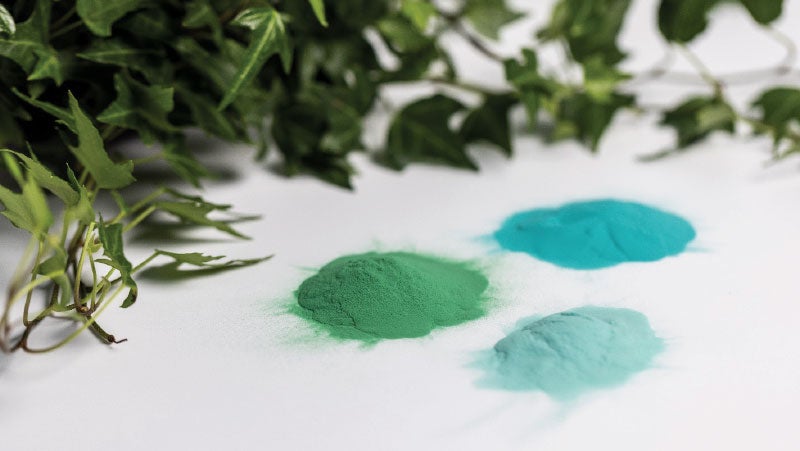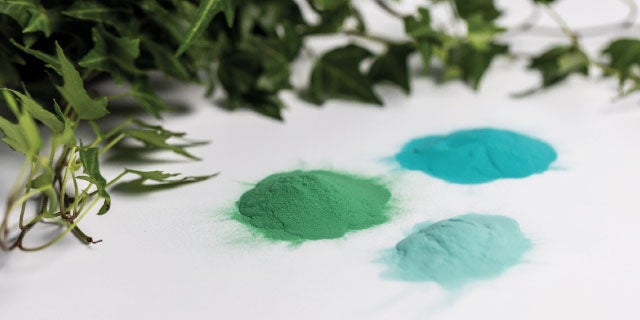As one of the world's largest makers of protective coatings, PPG is at the forefront of the industry, engineering solutions that help our customers elevate the durability and aesthetics of their products and streamline their finishing operations. So, what's one of the top trends in 2024 and beyond in the world of industrial coatings? One word: sustainability.

Exploring ways to make great products with fewer chemicals of concern is a focus for many manufacturers and their customers, but it's not the only one. Coatings companies like PPG are investing heavily in research and development (R&D) to create new products and processes that improve operational efficiencies, lower carbon footprint, reduce water, energy and waste and utilize more renewable energy sources.
For PPG's Industrial Coatings business, a big area of focus will continue to be on growing our portfolio of sustainably advantaged solutions, including powders, waterborne and radiation curable coatings, as well as formulations that are made without PFAS (Per- and Polyfluorinated Substances) compounds.
The Power of Powder
Because powder coatings are reclaimable and formulated without solvents that release volatile organic compounds (VOCs), adoption of powder coatings is growing across industries, including automotive (particularly the Electronic Vehicles market), appliances, aluminum extrusions for building products and general finishing.
While still dwarfed by liquid coatings, the adoption of powder coatings is expected to grow at an annual growth rate of over 7%, according to Grandview Research, making it the one of the world's fastest growing coatings technologies.
PPG has launched several groundbreaking powder coatings over the past few years including PPG ENVIROCRON® EXTREME PROTECTION EDGE powder, PPG ENVIROCRON® HIGH TRANSFER EFFICIENCY (H.T.E.) powder with first-pass build rates of up to 85%, PPG ENVIROCRON® LUM retroreflective powder, PPG CORAFLON® Platinum high transfer efficiency FEVE powder coating technology, PPG ENVIROCRON® HeatSense powder for heat sensitive substrates, as well as a cutting-edge graffiti resistant powder.
But the newer focus is on developing and expanding our line-up of powder primers. In 2023, PPG launched PPG PRIMERON® primers designed to provide high corrosion resistance for substrates including steel, hot-dip-galvanized steel, metalized steel and aluminum substrates.
PPG PRIMERON® H.T.E. (High Transfer Efficiency) Zinc-Rich Polyester Primer will soon be available. This breakthrough primer offers impressive first-pass build rates, outstanding UV durability and corrosion protection compared to standard zinc-rich epoxy primers.
PPG is poised to meet the growing global demand for powder coatings and is making moves through acquisitions and expansions to fortify our powder coating offerings and increase global production.
PPG's Industrial Coatings business also has been growing the company's powder ecommerce website that was launched in 2022, giving customers quick and easy access to more powder coatings and colors than ever before.
The Rise of PFAS Alternative Coatings
In 2023, PPG launched several products that focused on PFAS-alternative compounds including PPG FUSION® PRO, our latest non-stick coating innovation for cookware and bakeware. The sol-gel coating combines excellent performance and color and is made without intentionally added PFAS chemicals.
Last spring, PPG announced the development of new cutting-edge PPG ERGOLUXE® powder formulations for the metal office furniture industry that are made without intentionally added polytetrafluoroethylene (PTFE), one of the most widely used PFAS chemicals. The coating is available in both smooth and texture finishes, a breakthrough in the industry.

The Rise of Radiation-Curable Coatings
Radiation curable coatings, a class collectively referred to as rad-cure or energy-cure coatings, were first introduced over 50 years ago with adoption of ultra-violet (UV) curable coatings for wood. This technology led to the development of electron beam (EB) curable coatings. PPG was an early pioneer of these advanced finishing solutions and remains at the forefront of the industry today.
Most conventional liquid paints contain solvents to dissolve and disperse ingredients such as pigments, resins and additives. Rad-cure solutions allow manufacturers to use 100% solid solutions that contain no solvents, which leads to low to no volatile organic compound (VOC) emissions and lower flammability risks.
Rad-cure coatings are also more energy efficient since curing is nearly instantaneous and less energy is needed for drying from UV lamps or electron beams compared to conventional thermal drying ovens.
Currently, PPG is intensifying its R&D efforts to develop new breakthroughs in UV/EB curable solutions, including its EB portfolio for coil steel and aluminum coatings. Advancements in these technologies are expected to transform coil-focused industries like building materials, appliances and HVAC and raise the bar for sustainably advantaged and energy efficient solutions.
PPG offers a wide range of energy-curable 100% solids, water-borne and solventborne formulations, suitable for a wide range of industries including coil, automotive, packaging and specialty materials.
The newest products in the company's rad-cure portfolio are PPG DURANEXT® UV/EB curable coatings for the building products industry. It is the company's first rad-cure product for the coil coating industry and represents an alternative to traditional coil coating systems.
Our commitment to sustainability
For more than a decade, PPG has prioritized integrating sustainability into every facet of the organization. The company recently announced 2030 sustainability targets, including 50% of sales from sustainably advantaged products.
Learn more about PPG's commitment to sustainability and 2030 targets >

